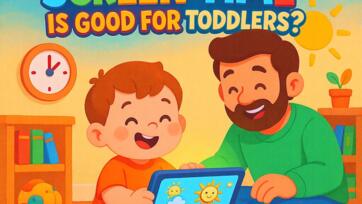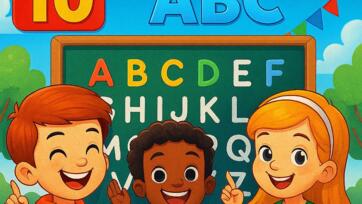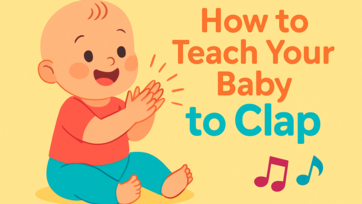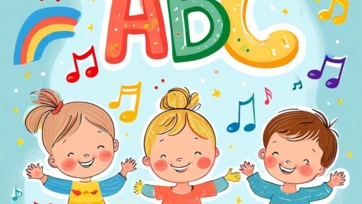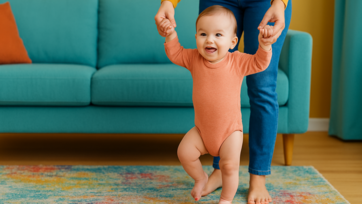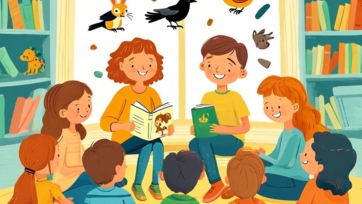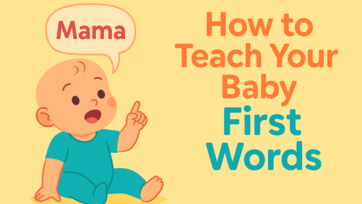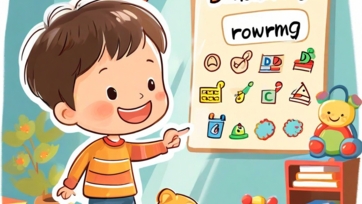Music is more than just entertainment—it’s a powerful tool for learning, especially for young children. From lullabies to ABC songs, music plays a big role in a child's early development. But have you ever wondered why children remember songs more easily than spoken words? Or why they can sing along with rhymes before they can even read?
In this article, we’ll explore how songs help children learn faster, the science behind musical learning, and practical tips for using songs in your child’s daily education.
1. Music Activates the Brain
Music stimulates multiple areas of the brain at once—especially those responsible for language, memory, attention, and emotions.
-
When children listen to or sing songs, they engage both the left and right sides of the brain.
-
Rhythms and melodies make it easier to store and recall information.
-
This brain activity helps children process new words, patterns, and ideas more quickly.
Studies show that students exposed to music perform better in language and math. That’s because music strengthens cognitive functions and supports long-term memory.
2. Repetition Boosts Memory
Songs naturally include repetition—choruses, rhymes, and repeated verses. This repetition helps children:
-
Memorize new vocabulary
-
Understand sentence structure
-
Recall important facts
For example, kids may struggle to remember the days of the week when spoken—but sing the “Days of the Week Song” and they’ll remember them instantly!
Why it works: Repetition through music reinforces neural pathways in the brain, making learning automatic and long-lasting.
3. Music Makes Learning Fun
Children learn best when they’re having fun. Songs add joy, energy, and playfulness to the learning process.
-
Singing together turns a boring topic into an exciting game.
-
Music reduces stress and anxiety, creating a positive learning environment.
-
Kids look forward to lessons when songs are involved, increasing focus and participation.
When kids sing about letters, numbers, animals, or body parts, they learn these concepts without even realizing it.
4. Songs Improve Language and Vocabulary Skills
One of the biggest benefits of songs is how they build language skills in young learners.
-
Songs introduce new words and phrases in context.
-
They help kids recognize rhymes, which improves reading and phonics.
-
Kids learn intonation, pitch, and pronunciation by copying the singer.
For children learning English as a second language, songs are especially helpful. They offer a natural and enjoyable way to learn sounds, sentence flow, and everyday vocabulary.
5. Music Strengthens Listening Skills
Good listening is key to learning. Songs train children to listen carefully to words, sounds, and rhythms.
-
They must pay attention to lyrics, tempo, and pauses.
-
As they try to sing along, their brains tune in to details of pronunciation and phrasing.
-
Musical cues help kids know when to join in, pause, or repeat—building focus and auditory memory.
This improved listening also helps in the classroom when children follow instructions or understand stories.
6. Songs Encourage Movement and Motor Skills
Many educational songs include actions—like clapping, jumping, or dancing. These songs:
-
Strengthen gross and fine motor skills
-
Improve hand-eye coordination
-
Help kids learn by doing, not just hearing
For example, "Head, Shoulders, Knees and Toes" teaches body parts while engaging the whole body. Combining movement with music enhances kinesthetic learning, especially for active learners.
7. Songs Build Social and Emotional Skills
Singing together in a group builds teamwork, confidence, and self-expression.
-
Children learn to take turns, listen to others, and cooperate.
-
Performing songs helps shy kids come out of their shell.
-
Music can also teach emotional awareness—songs about feelings, kindness, or sharing help children understand their emotions better.
Classroom songs, group activities, or musical games promote a sense of belonging and positive social behavior.
8. Songs Provide Structure and Routine
Songs are a great way to manage transitions and routines—especially in schools and daycares.
-
"Clean-Up Song" signals it’s time to tidy up.
-
"Hello Song" starts the day with a cheerful mood.
-
"Goodbye Song" helps children end the day calmly.
This musical structure makes routines predictable and comforting for children. It also reduces behavioral issues and confusion, especially in group settings.
9. Music Supports Multisensory Learning
Children learn best when multiple senses are involved. Songs naturally combine:
-
Hearing (listening to music)
-
Sight (watching actions or visuals)
-
Touch (clapping, dancing, or playing instruments)
This multisensory approach strengthens memory, increases attention span, and helps different types of learners—from auditory to kinesthetic.
10. Songs Teach Concepts Across All Subjects
Music can be used to teach any subject—not just language!
-
Math: Counting songs like “Five Little Ducks” or “Ten in the Bed”
-
Science: Songs about planets, animals, or the weather
-
Social Studies: National anthems, cultural songs, or geography rhymes
Music helps children learn abstract concepts in a simple, engaging way. It gives rhythm and context to even the most challenging topics.
Examples of Popular Educational Songs for Kids
Here are a few timeless examples that children around the world love:
| Song Title | What It Teaches |
|---|---|
| ABC Song | Alphabet and letter order |
| Twinkle Twinkle Little Star | Rhyme, rhythm, curiosity |
| Wheels on the Bus | Everyday actions and sound words |
| Old MacDonald Had a Farm | Animals and animal sounds |
| If You're Happy and You Know It | Emotions and body awareness |
| Five Little Monkeys | Counting backwards, safety |
| Phonics Song | Letter sounds and early reading |
These songs are available on YouTube, Spotify, and children's learning platforms.
How to Use Songs for Learning at Home
-
Play music daily: In the car, during playtime, or before bed.
-
Sing along: Use hand gestures and dance to boost engagement.
-
Repeat favorite songs: Repetition improves memory and confidence.
-
Ask questions: “What animal came next?” or “What’s the first letter of that word?”
-
Create your own songs: Make up silly tunes about your child’s name, toys, or day.
You don’t need a perfect voice. What matters most is the interaction and joy of learning together.
Final Thoughts: Music Makes Learning Magical
There’s no doubt that songs are one of the most powerful tools in early childhood education. They bring together sound, rhythm, words, movement, and joy—helping children learn faster, better, and with a smile.
Whether you’re teaching ABCs, counting, science, or good habits, music will always be your best friend. So turn up the volume, sing your heart out, and watch your child grow into a happy, confident learner.
Want more learning tips, fun educational songs, and printable resources? Visit Learn-Kids.com and follow us on Facebook, Instagram, and YouTube for daily updates!

